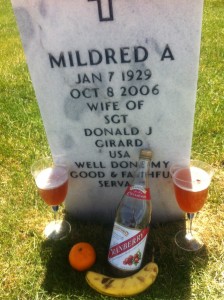Young Kate Shelley (the girl with two first names)
Table of Contents
Preview
1. Kate falls asleep
2. Transcontinental Railroad?
3. Prelude to The Storm … and Destiny
4. The Shelley Family
5. The Storm, July 6, 1881
6. Kate & the Bridges
7. Aftermath and Later Life
Notes and Author’s comments
More Notes and afterthoughts
Preview
Some swear they have seen it. Many refuse to look. Others, those who deny the romance of heroic history, say it is just plain nonsense.
Two mighty railroad bridges stand side-by-side out in the middle of Iowa. One is well over a century old; its steel trusses betraying its age. The other is gleaming and new … a 21st century engineering marvel.
The older structure is slowly being retired. At first it no longer carried passengers. Now the engines of trains that cross her are required to crawl slowly as they haul their freight over the Des Moines River. Someday even that will cease; the clack of steel on steel will be relegated solely to the new bridge.

The New Kate Shelley High Bridge, under construction, 2008, next to the Old Kate Shelley Bridge.
And yet, as a National Historic Site, the older sibling may never be torn down – preserved forever as an American icon.
Until then the tiny, lonely, swaying light on the older bridge will still shine for those who believe. For them, late at night, when swollen rain clouds roll across Iowa’s fertile center, a faintly visible figure will move along the rusting old bridge, gently and deliberately swinging a light from side-to-side.
Some say it is the ghost of famous civil engineer George Morison, who passed away shortly after the older bridge was built. But most believers – trainmen, history buffs and lovers of local lore alike – well they know that it is something and someone else.
_____________________________________________________
1. Meet Kate as she Falls Asleep
Out in the plains of Iowa, on a small family farm, there once lived a 15-year old girl named Kate Shelley.
Most nights she lay in bed keenly awake until very late. Until long after the sun went down. After the chores were done. After her mother and siblings were fast asleep.
What was Kate doing? She was patiently waiting, carefully listening. She heard the sounds of sleep – snorts and sniffles, tossing and turning – coming from her three younger siblings. She not only shared a room with them, she had become their principal care taker.
That’s not what she was listening for. Wait for it Kate. Be still. Be quiet. Be patient.
She heard the creaks of the boards and nails in the farmhouse her father had built. She remembered him building it; she could recall many evenings he had continued to work on that modest farmhouse, keeping it in fine repair through all sorts of weather until just a few years ago.
House creaks were not what she was listening for. Wait Kate. It will come.
She heard the gentle sweep of prairie breezes, as they bounced over Honey Creek – with its swales and cottonwoods. She heard the shimmer of leaves, the waving of grasses, and sway of weeds up against the barn walls and farm fences.
That’s not what she was listening for. Be still Kate. You can do it … It won’t be long now.
She paced her breath. She wanted to be able to hear it as soon as possible – at the earliest possible moment. It was her trigger. Her window to an escape. An escape of fantasy from this life on the farm, to places far away from her endless duties.
A bullfrog croaks, then jumps into Honey Creek. Kind of late for mating season. Maybe that sly vixen fox had scared him; she does have a litter of kits to feed. Or maybe that Great Horned Owl had tried for the frog; she thought she’d seen one way up in a cottonwood along the creek last summer.
She was not listening for frogs, or foxes, or owls.
A horse from the barn whinnies – that would be Sady, Kate’s frequent companion in sleeplessness. Maybe she was waiting in anticipation, too. Or maybe arthritis; or maybe too many apples from that Thomson girl up the road.
No, not listening for Sady either.
There! Could that be it? She heard the distant clack-clack-clack of steel on steel.
Kate’s bed trembles ever-so-gently. Was that her quivering? Or the ground?
She can surely feel it coming now. The Midnight Express is coming! It is crossing the river now.
[1] The Midnight Express was formally known as the “Chicago Limited”, which ran from Omaha (with the new Union Pacific bridge across the Missouri since 1872) to Chicago. It was also sometimes called “The Fast Atlantic Express”, depending the locality. Of course it was known as the “Express” or “Limited” since it made only a few stops along the way – to pick up passengers from connector lines, or to get coal and water. Lighter loads and tender cars had allowed the Express trains to speed past most of the tiny railroad towns.
The Express is heading to Chicago. From there many passengers will go on to any exotic distant land. To whatever places they go, all are far from this farm. Soon people on the Express will be visiting with important people – Kings and Queens; beautiful princesses and handsome princes. They will be doing important things – selling lumber, buying steel, building factories, trading grain contracts, building the country.
The Express draws nearer quickly. It rumbles across the largest river she knows, by far: the Des Moines River. She knows well the hum and buzz of the trestle bridge under a heavy load.
She imagines herself as one of the well-dressed passengers, well fed, with finely coiffed hair. She imagines her own head full of worldly thoughts. A Pullman Porter checks on her to make sure that last jostle hasn’t disturbed her – or her precious cargo. Is it a briefcase of bonds, important coal contracts, or simply valuable jewels?
In less than a minute the coal-fired steam engine will cross another bridge, at Honey Creek, right behind the Shelley Farm. There’s the coming crescendo: one last loud set of rumbles and trembles. The boiler chugs some steam to push the mighty pistons; the engine belches smoke. Steam, having done its work to move the pistons, hisses out the steam ports. She can hear the rattle as the tire flanges clatter on the steel rails. [2]
[2] Train wheels have a very hard layer of steel around their perimeter, called tires. Much like car wheels have special tires around them. Tires have flanges made integral with them to help keep the train “on the rails.”
Kate holds tight to her fantasy most nights; she cherishes each night the Midnight Express rolls by; she is only a few hundred yards from a journey to the world. Outside of Iowa.
Then the sounds of the Express begin to slowly fade. As long as she can hear it, Kate stays awake. After the rattle of the bridges, after the chug of the steam engine. After the last cry of the steam trumpet [3] as the Iron Horse passes a distant depot, and when the jangling blast-furnace strengthened wheels screeching around turns laid out by steel rails have faded completely away … after all that, Kate allows herself to drift away.
[3] Steam Trumpet: name for the train’s whistle on a 19th century steam engine train. To use it was “to blow off some steam.”
Some nights, when the air and breeze are just right, she can catch a whiff of something more: The air grows perceptibly denser, as if perfumed by some unseen censer [4]; it’s that Iowa bituminous and sulfur-infused coal. With the fading sound of the Midnight Express, the faint hypnotic smell of locomotive smoke, and carried by her fantasies, Kate Shelley hopes for a night of sweet dreams.
[4] This text is inspired by Poe’s The Raven, wherein the 14th verse begins: “Then, methought, the air grew denser, perfumed from an unseen censer // Swung by Seraphim whose foot-falls tinkled on the tufted floor.”
Soon enough a new day will dawn and, with it, hard reality.
And so the days passed. And the weeks. And the summer months…. One after another.
Although Kate loved her family and liked her life on the farm … well, maybe one night it would be different. Maybe one night, one special night, Kate’s life and the Midnight Express would come together in much more than fantasy.
Table of Contents
Back to top of Kate falls Asleep
2. Transcontinental Railroad?
Most people know as certain fact that “The Golden Spike” driven at Promontory Point, in Utah, on May 10, 1869, joined the Union Pacific line with the Central Pacific line, thus completing America’s first transcontinental railway.
Fewer know that this is actually false. There was, technically, not then a true “transcontinental railroad.” At the time of “The Golden Spike” the eastern end of the Union Pacific line terminated in Omaha. There was yet no bridge across the Missouri River to connect Omaha to Council Bluffs, Iowa, and to America’s much more populous east.
The construction of the “transcontinental railroad” to connect Omaha with California’s Great Bay had begun in the summer of 1865, shortly after the Civil War ended.
Yet the Mississippi had been crossed with a railroad bridge way back in 1857, at Rock Island, Illinois – near what is known today as the Quad Cities. This was a magnificent transportation achievement for its day, and was accomplished largely thanks to an engineering survey conducted some years earlier by a young Army officer named Robert E. Lee. That the Rock Island bridge maintained this vital rail connection after a severe accident shortly after it opened was thanks largely to a railroad lawyer, named Abraham Lincoln.
Linking Chicago to America’s heartland, the Rock Island bridge had the effect of almost guaranteeing Chicago’s ascendancy (over front-runner St Louis) as the King City of America’s western empire. Through Chicago would flow the great bounty of grain and coal from America’s Breadbasket. And through Chicago to the Breadbasket would flow the great pine timbers to build towns and cities; the endless manufactured goods, such as stoves, furniture, tractors, cutlery …
By 1867, the railroad had made it all the way across Iowa, to Council Bluffs – directly across the Mighty Missouri River from Omaha. A bridge across the Missouri was finally completed in 1872; until then trains were ferried across the Missouri. Along the 300 miles across Iowa – as the railroad linked up cities, railroad towns, distribution centers, and coal mines – the rail line had to cross many rivers and streams. The largest of these was the Des Moines River, in Boone County, near Moingona, Iowa.
Built rather quickly, the bridge was quite narrow – only a single track with a slender maintenance walkway beside the line.
The walkway was not intended for pedestrian traffic. To discourage foot-travel, the nails on the boards were not pounded down flush. The boards were unevenly spaced. They were roughhewn, with open spaces between them; Looking down between gaps in the walkway’s board, one could quite intimately see and feel the river flowing below. There was no safety of a hand rail. Nonetheless, it was a remarkable bridge: its four spans over the river traversed about 675 yards.
Table of Contents
Back to top of Transcontinental Railroad
______________________________
3. Prelude to The Storm & Destiny
As she had hoped – but surely not as she had dreamed or imagined – the destinies of Kate Shelley and The Midnight Express were forever joined one night: July, 6, 1881.
The rain came down all afternoon like Kate and her mom had never seen before. It was hard to tell when the sun went down, the sky was so dark. The barn, and windows and doors were all shuttered; but they all rattled in a way that made relaxing impossible. Lightning flashed across the sky every few seconds; then down to the ground. Heaven was letting loose some sort of evil rage.
After an anxious dinner none even tried to sleep. Sleepy little Honey Creek roared almost as loud as when the Midnight Express came by. Kate, by virtue of listening so intently almost every night, grew very worried. She wasn’t worried about the fox den getting washed out. Or the branches coming off trees; or trees falling into the creek. She wasn’t worried about the livestock. She wasn’t worried that the rain flattened their crops. She wasn’t even worried about the house or some small leaks that began moistening the kitchen.
She was worried about the Midnight Express. It was “her” life; it was “her” fantasy that was in jeopardy. In her own way, Kate considered the 100 or more souls on that train to be her friends. Would the Express come? And if it did: Would it be safe?
Table of Contents
Back to top of Prelude to The Storm … and Destiny
_______________________________________________________________-
4. Shelley Family History
The Shelley family had emigrated from Ireland in 1866, before Kate, her parents’ first-born, was even one year old. They ended up in central Iowa, near the tiny town of Moingona, where her father could get some land, run a farm, and work for the railroad.
Like most of the country, the economy there was beginning to really boom. Countless repeated ebbs and flows of glaciers from multiple ice ages had deposited rich soil across the great American Midwest. Thus blessed, farms produced grain and livestock to feed the county’s rapidly growing population.
Many ages before that, ancient seas had left vast deposits of aquatic biomass: these became the Iowa coal fields that helped feed the region’s rapidly growing industrialization and railroad tender cars.
It was a place rich with opportunity for those who were ready to work.
Michael Shelley built a small but sturdy farmhouse overlooking Honey Creek. Four siblings followed. Kate was a big sister.
Michael Shelley was especially fond of Kate, his oldest daughter. From her youngest memories they were very close. She especially loved when he came home in the evening. He would place his trusty railroad lantern on the mantle, then give her a hug, tousle her raven hair, and tell her how beautiful she was. Kate’s usual expression – and the look in her eyes – gave the impression of a deep sense of seriousness and resolve; a seriousness and resolve that could not easily be dismissed with a smile or a laugh.
Yet her father could make her seriousness melt and her spirit soar. He’d glide easily from hugs and tousles into a round of stories about his work in the railroad yard. The excitement of so many cars – so much cargo, so many people – moving from place to place. And it all depended on him.
At the end of every night’s telling of stories – some tall, some true – Michael would tell his daughter: “Kate, you can do anything. When the time comes, you will know what to do.”
Then, calamity. When Kate was only 13 her father fell gravely ill, and quickly passed away. Only a month later her 10-year old brother James, the next child after Kate, drowned in the nearby Des Moines river. Kate’s mother fell into despondency, perhaps depression. Now young Kate was more than just the big sister: over the next few years she took on more and more of the family’s responsibilities … raising her siblings, managing the house and farm. Her solemn nature of serious resolve became a great asset.
Soon enough, her resolve would grow stronger.
Table of Contents
Back to top of The Shelley Family
__________________________________________
_________________________________________
5. The Storm – 2: July 6, 1881
There’s no telling what Kate was doing when her attentive ears first heard the noise on that fateful Wednesday, July 6, 1881. Perhaps she was finishing a turn at churning the butter. She could’ve been making lye, being careful not to give herself a chemical burn. Possibly feeding livestock, hoeing or weeding. Fixing a fence. Putting up hay. Plucking a chicken. Darning some socks, or repairing a shoe sole. If she wasn’t doing these herself, she was seeing to it that one of her siblings were on the tasks.
But she heard it. A deep long, ominous rumble. Most definitely: a thunderstorm was coming.
No doubt she found a way to quickly finish what she was doing. She put her things away … and had her siblings do the same … maybe in the shed, or in the barn, or in the cupboard.
Then she ran to the clothesline. Those skirts and shirts, pants and knickers would never dry if the storm came before she could get them inside.
Once inside, Kate and her family watched the storm clouds build, grow dark, and move over them – from horizon to horizon. They probably began preparing some stew or soup, heated over the wood or coal-fired stove. The rains came hard and fast, like they’d never seen before. This was no ordinary summer thunderstorm, what they sometimes called a “gully washer.” The clouds poured buckets down on central Iowa for hours. The lightning flashed; the thunder roared.
To fortify their nerves, Kate led her siblings in faux bravado through retorts to the thunder and wind.
“Is that all you’ve got??” They shouted. And: “Oh! That was nothing! Show us more!”; or: “Fart like you mean it!!”
It was whistling past the cemetery.
On and on it went. The rivers rose. The creeks rose. The streams and rivulets that fed the rivers washed out over the gently sloped Iowa fields.
Around dusk – with clouds so dark it was difficult to tell when dusk was – young Kate feared for the livestock sheltering in their humble barn, down close to Honey Creek.
Kate realized the animals in the barn might drown should the creek swell much further. She donned a shawl and straw hat, then ran down toward the creek, sloshing through the mud and puddles, skittering along like a water beetle. Just as she opened the barn door, a mighty gust of wind swept her hat away … and vigorously tousled her wild mop of dark hair. The mussing of her hair gave her a momentary sense that her father was near. She re-focused and, undistracted by the wind and storm, she opened each stall and led their few livestock – two horses, two cows and a sow – up a gentle rise to some woods behind the farm. Then she returned to the barn to fetch two piglets, which she carried up to the farmhouse.
Safely inside the farmhouse, her clothes and hair drenched, and sticking to her slender frame, Kate’s senses grew even more alert. Now she could not just keenly hear and see the storm; now she could feel and smell the evil in this storm. She sensed the potently electrified atmosphere, and the way the rain and low pressure sucked the primordial scents of the earth right out of the soil.
As her siblings and mother nervously poked at their dinner after watching Kate’s heroics, Kate sat by the stove to warm up. She had changed out of her work clothes and into her pajamas, and was wrapped in a woolen blanket. They all looked nervously at each other, taking bites between gusts of howling wind and peeling cracks of thunder.
Right after the Midnight Express of the Chicago & Northwest railroad crossed the wide Des Moines there was a much smaller bridge, across Honey Creek, at the edge of the Shelley farm. It really was just a tiny bridge, as far as railroad bridges go. Perhaps 25 yards across.

Rebuilt bridge over Honey Creek.
But the growing intensity of the creek’s roar gave Kate reason for great concern. The Midnight Express was due to cross in just a few hours. Would the bridge hold up?
Kate adjusted her ears to listen even more closely. Beyond the rain, beyond the thunder, beyond the wind she listened to the whoosh of Honey Creek. It was normally just a trickle.
Suddenly. Around 11 PM … she heard a booming colossal “CRACK!” through the cacophony of the storm.
About a mile and half to the west of the Shelley farm, across the Des Moines River, at the railroad station in Moingona, the night station manager grew anxious too. He’d never seen a storm like this either, and the Chicago & North Western crossed numerous creeks on its way east to tiny Harmon Switch, on the Jordan River, and then to Ames, home of the still rather new Iowa Agricultural College and Model Farm. [5][6].
[5] – The town of Harmon Switch was first called Midway, for its central Iowa proximity. In the 1850s it was renamed Harmon Switch after a local farmer and large landowner (William Harmon), and its small railroad junction. Later it was changed to Jordan, and remains so named today, the same as the river, which runs there. [History of Boone County, Iowa, Volume 1.(1914) Edited by Nathaniel Edward Goldwait. Pg 222.]
[6] – Iowa Agricultural College and Model farm is now, of course, Iowa State University.

Layout of Locations for events of July 6, 1881. Photo of sign outside the museum. (At the you are here pin). North is up. [credit to Kate Shelley Railroad Museum and Park]
At about 10:30PM, he sent out a pusher locomotive to check on the line … at least as far as the next station, near the Jordan, some 10 miles away. As soon as the boiler was fired, it took off east, across the river.
Leaving the station with four men the locomotive almost immediately crossed the long bridge across the Des Moines River. As lightning flashed they could see the water had risen nearly to the bridge.
A few minutes later they came to Honey Creek, with its tiny trestle bridge. They could not have known – they did not see – that some support timbers beneath the bridge had cracked and others washed away. As the locomotive crossed the bridge it failed completely, collapsing into swirling Honey Creek.
Table of Contents
Back to top of The Storm, July 6, 1881
6. Kate and the Bridges
Kate knew immediately what had happened. She re-wrapped herself in a shawl, took her father’s railroad lantern off the mantle and lit it. Then she fetched her father’s oversized railroad mackintosh – a rare extravagance in Iowa in those days – and briskly strode to the door as she slid her arms into the Mac.
“Mother. There’s a train in the creek! There are people down there.”
“Kate”, her mother yelled. “Please don’t go outside again. It’s too dangerous.”
Kate paused pensively. Then: “Mother, if father were still alive, that could well be him in the water. And if it weren’t him down there, then he’d be going down to help. I have to go.”
Her mother’s eyes softened and she tacitly nodded her consent.
Kate made her way down to the bridge. As it turned out, two men had perished in the collapse; but Kate couldn’t know that. But, there were two survivors. When they saw the light of the railroad lantern they yelled with all the energy their lungs could muster. One man clung to the upper branches of a collapsed tree; the other to bridge timbers.
You can do it Kate. You know what to do.
Indeed, Kate knew what had to be done. She had to cross the Des Moines River bridge, in the dark, in the storm, go to Moingona station, and stop the Midnight Express … otherwise it would surely plunge into Honey Creek atop these men.
The time was too short, and the slopes too muddy and steep, for Kate to try and save them herself. She violently swung the lantern from side to side to let the men know they’d been seen. Then she set off to the Des Moines River bridge.
Guided by her father’s lantern, Kate nimbly danced along the line, over the ties and between the rails – through the wind and rain – about a quarter-mile to the Des Moines River bridge. At the bridge’s beginning she paused a moment – to gather her courage and resolve – before stepping onto the perilously narrow walkway.
Suddenly, the mightiest gust of wind yet staggered her. Rain beat upon her face and her hands like sand … and stung as if they were a thousand tiny salt pellets. And worse: the lantern’s light went out.
Without the lantern’s light Kate could not possibly walk across the bridge without a dangerous, deathly stumble.
For a moment Kate lost her resolve, her focus. Dark was all around. The wind eased, whispering into her ears — it seemed to carry her father’s voice: “Kate. You can do this. You know what to do.”
Then she began to crawl across the bridge, plank by plank.
By her calculations, she had about 45 minutes to get across and make it to the Moingona station.
As Kate crawled on and on – board after board – splinters and nails tore at her coat, her pajamas, at her knees and at her hands. When she looked down she could see that the river had risen nearly up to the bridge. Halfway across, in a flash of lightning, she could see an enormous tree coming right for her. At the last moment a swirl in the river – or was it Providence? – diverted the tree … its mighty trunk and groping branches slipped safely past her.
At some point, perhaps halfway across the bridge – reaching almost blindly for each successive plank of the walkway – hypothermia began to set in. Now soaked and chilled from the rain, Kate fought back the delirium with determination. She must save the Express.
You can do it Kate. You know what to do.
On and on she went, feeling her way for each plank. One after another. And then … Finally! … Kate had reached solid ground!
She had a half-mile remaining to get to the station. Stiff, sore and cold, Kate managed to get up off her scratched and bloody knees, onto her feet, and begin running to the station along a footpath she had walked before in better weather; it paralleled the line’s north side.
The men at the station were astonished to see a dripping wet, exhausted 15-year old girl collapse in front of them.
Through her chattering shivering jaw she managed to squeak out: “S-s-s-top the ex-s-spress. S-s-stop express. Honey Creek Bridge ….”
As the men rushed to help Kate, one recognized her. “That’s Michael Shelley’s girl. That’s Kate. From Honey Creek. The bridge is out.”
The express did not stop in tiny Moingona. But it was scheduled to stop at the next station up the line, Ogden. Immediately the station’s telegrapher started tapping a message for Ogden station. The Morse read: STOP XPRESS. BRDG OUT.
The telegrapher did not receive a reply. It turned out that at that moment all the telegraph lines along the Chicago & North Western went down from the storm’s ferocity. A backup plan: The night’s head switchman ran out with a lantern to stop the Express.
Well, it turned out that the telegraph message got through. The Express stopped in Ogden.
Kate Shelley had saved the Midnight Express.
As Kate sat shivering by the stove, sipping some hot tea, she suddenly stood bolt upright. “There are two men in the water at Honey Creek! We’ve got to save them.”
Another engine was fired up, pulled up from the yard’s sidetrack, and three men and Kate climbed into the cab, behind the firebox. In a minute they were safely crossing back over the very same bridge Kate had just risked death to crawl over.
When the train’s headlight revealed the calamity at Honey Creek bridge, the engine stopped. In the dark, by the light of two faithful flickering railroad lanterns – one Kate’s father’s, the other the switchman’s – they found that the two men were still alive, clinging desperately to stay above the water. But they were on the far side of the creek; there was no way to get to them from the west side.
The wind, ebbed momentarily, and sounded like a ghostly whisper: “You can do it Kate. You know what to do.”
“Follow me!” Kate yelled above the roar of rushing waters. Carrying her father’s lantern, she led the rescuers upstream, nearly a quarter-mile, above the farm, to the next bridge across Honey Creek, which they found intact. Her sure feet showed them the way along the slippery soil of the creek bank. They crossed over the bridge, went back past the farm and then down to the collapsed bridge.
By the light of the lanterns they located one man close to shore clinging to a trestle timber. The rescuers, with Kate holding “her” lantern, risked their own drowning, linked their arms, and pulled him from the water.
The other was too far out in the flow to rescue that night. The three railroad men returned to the engine, dropping Kate off at the farmhouse, making sure her mother knew of Kate’s heroism. They spent the night in the engine’s cab, keeping an eye on their co-worker and friend, thanks to the light of a lantern. He was rescued the next morning, after the creek flow had abated, when sunlight had returned and evil had left.
Table of Contents
Back to top of Kate & the Bridges
7. Aftermath and Later Life
As it turned out, there were 200 people on the Midnight Express that night. They took up a donation for Kate; it came to about $200 – no small sum. The Chicago and North Western Railroad gave her a cash award too; the state gave her a gold medal.
Soon enough, Kate was a national hero. Songs and poems were written to praise her.
The Railroad raised money for the Shelley children’s education. Kate was given a lifetime pass on the railroad; whenever she came home, she was able to get off right next to her family’s farm. For a few years the train frequently stopped at the Shelley farm so that admiring and well-wishing passengers could get out and greet Kate.
Even with her lifetime pass, Kate left Iowa only once. Of course she went to Chicago. That was to visit the Columbian Exposition, also called The 1893 World’s Fair. Despite her dreams and fantasies, as it turned out, Kate’s heart really was in Iowa. There she remained the rest of her life.
Kate got an education at nearby Simpson College, and tried teaching for a while. She bounced between various jobs, always in central Iowa, including working for the state and even running the Moingona station for a while. A woman running a train station; her dad would have been proud.
Many men were interested in courting Kate, especially a switchman at the station. Always her own woman – fierce, serious, determined, resolved – she never married, although she was engaged once.
In 1901 a new bridge was built across the Des Moines by George Morison a few miles to the north. It was called the Kate Shelley Bridge. When it was re-built, just a few years ago, the new bridge was dubbed The New Kate Shelley High Bridge. In the 1950s the Chicago and North Western began running a very modern streamlined train from Chicago through Iowa: It was called The Kate Shelley 400.
During the 1890s and first decade of the 20th century, the Shelley farm fell into mortgage arrears. The railroad helped the farm stay afloat. Kate’s mom remained always in poor health – perhaps that’s the reason Kate never married or left Iowa – and Kate spent much of her time and energy on her mother. Mrs Shelley passed away in 1909.
Shortly after her mother’s passing, Kate began to fall into poor health herself. She struggled through a variety of illnesses. In 1911 she had her appendix removed. Very sadly, she never recovered, and passed away in January, 1912—age 46 – from Bright’s Disease, an acute failure of the kidneys – probably due to infection.
Kate Shelley is a true American Heroine.
The railroad line no longer crosses the Des Moines River at Moingona. Amtrak passenger trains pass far to the south, freight to the north, over the New Kate Shelley High Bridge. But you can go to what remains of the railroad station there. It now houses a museum, most of which is dedicated to honor the life and heroism of Boone County’s most famous resident: Kate Shelley.
In one of the museum’s most special and cherished displays stands an aged railroad lantern. That’s Kate’s father’s lantern, the one that led her to the barn, led her to the creek and led her to the brink of the Des Moines River bridge that fateful night, July 6, 1881.

The Kate Shelley Railroad Museum, Moingona, Iowa
If you go there, and you are all alone, and the museum is very quiet, and you are very patient, and you stand motionless before the lantern, and you listen very, very closely, history calls to you. “You know what to do. You can do it.”
The museum is closed at night. Even on summer nights when thunderstorms roll across Iowa. On such dark and stormy nights, when the “believers” have seen a swaying ghostly light appear to crawl slowly along the old High Bridge, no one has ever, ever gone to the museum to see if the lantern is resting in its display.
Joe Girard © 2017
Table of Contents
Back to top of Aftermath and Later Life
_______________________
Notes and Author’s comments – 1
Other Notes:
Kate and locals were not unfamiliar with train disasters. Evidently there had been a significant derailing near Stanwood, Iowa, the previous year.
Author’s Comments.
I initially came across this story in a small display at the “Steamtown National Historic Site”, a sort of museum to steam locomotion, in Scranton, PA, several years ago.
Since then I’ve been poking around libraries, book stores and the internet to find more information. I was astonished to find that no significant magnificent single body of work exists to relate this remarkable story of a heroic young woman.
I came across many, many sources … most very brief … that often conflict with each other in details. For this story, I chose to interpret everything in the most exciting and extravagant way possible. For example, some sources say Kate was 15-years old; others say 17. Which is more exciting? I say 15.
Some sources say the train had already stopped in Ogden; some say Kate’s message saved the train. Which is more extravagant? Kate saved the train.
Some say the telegraph went down before Kate arrived at the Moingona station; others say well after she arrived. I dramatically split the difference and chose to say it happened just as the message was received.
Where there were no details I did historical research; it was important for me to place Kate and her story appropriately within US, Iowa and railroad history.
Where other details were missing, well, I simply made them up – or skipped over them. For example, I have no idea what life was like for the Shelleys – life on the farm and schooling for the children. I do not know if or how Kate got the lantern across the long bridge. I have no idea what Michael Shelley might’ve done for the railroad — except that he DID have a lantern — whether he had a Mackintosh, and what Kate’s relationship with her father was like. I made all that up. Still, it’s all very plausible. I make no apologies.
Many Boone County locals do insist that the ghost of Kate Shelley roams the region and is partial to railroad lines and bridges. Of course this is silly. Or is it? I chose to include it as a possibility. For me, after this much study, Kate Shelley lives.
Finally, I had to finish this story and publish it for two reasons. First, it had rolled around in my addled head for so long that it was more or less “now or never.” I nearly deleted my work: the drafts and notes. Thankfully my wife not only talked me out of it, but she lovingly helped craft the structure of final drafts. Second, there appears to be a fairly substantial book to address Kate’s life and heroics coming out soon, called Boone County, by Misty McNally. I wanted to get this out so that I could not be accused of plagiarism.
I also must acknowledge the final draft editing help I received from my good friend Marcy.
As many of you know, I’ve been fighting headaches on-and-off for quite some time. My periods of intense focus are often quite short – and longer “free” periods are often devoted to the many details of life; so this was a bit of a labor of love. I worked on it a few minutes at a time, sometimes an hour or two, over the past many months. Why? It’s important to tell stories and personalize history. And I feel called to do so. Despite the desire to personalize the story, I chose not to include a picture of Miss Shelley. None I found did her any justice. Yes, I love history, I love writing, and … now … I even love Kate Shelley.
“I do believe in ghosts. I do. I do. I do.” – Cowardly Lion, Wizard of Oz
Table of Contents
Even more Notes and Author’s comments
More notes:
Another reason I was fascinated by this story, and how it evolved, is that it reminded me of a rather obscure song I like, by an obscure singer/writer I like. I call the song “Old John Joseph, the man with two first Names”, although the song’s singer/writer, Harry Chapin, named it “Corey’s Coming.”
Old John has worked for decades in a slowly dying railroad yard. He has stories and visions to share. You can listen here: Corey’s Coming.
I’ve written about Harry Chapin (Another Love Story) here: Another Love Story
The first Kate Shelley High Bridge was completed in 1901, essentially replacing the bridge Kate crawled across 20 years earlier. It’s one of the last projects of noted bridge engineer George Morison. He was trained as a lawyer. A famous civil engineer in his day, he was influential in getting the location of the great Central American canal changed from Nicaragua to Panama.
He does not appear to have aged well, was likely in poor health even during the Boone Viaduct (first official name) construction, and died two years after the structure was completed, aged only 60. The bridge was the longest and heaviest viaduct of its time, and also may well be the longest extant double-track railroad viaduct in the world. It is listed in the National Register of Historic Places. So, it will stay up as long as nature permits. Some say his ghost haunts the bridge as well.
Joe Girard
Table of Contents
Back to top of Notes and Author comments




























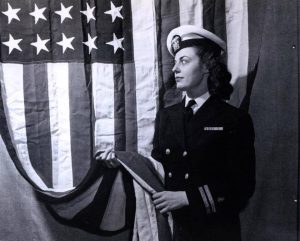























































































































































































































































































































































































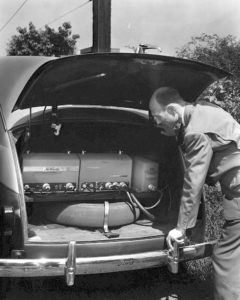










![Gladys Kravitz, the nosy neighbor. [8]](https://girardmeister.com/wp-content/uploads/2016/01/gladys_kravitz-300x200.jpg)







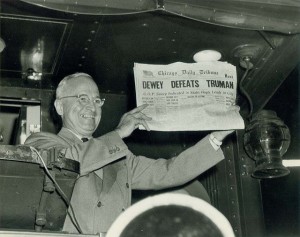
























 Perhaps, if I’m lucky, when I pass, it will go like this: A monarch butterfly lights gently on my hand. How lovely. The monarch metamorphoses into my dad. Not the old frail man of recent years, but the young virile 30-something stud who patiently modeled and taught me important things. He comforts me, hugs me, and then whispers ever so gently … he explains that I’m experiencing a rare and wonderful once-in-a-lifetime event. Everything will be OK.
Perhaps, if I’m lucky, when I pass, it will go like this: A monarch butterfly lights gently on my hand. How lovely. The monarch metamorphoses into my dad. Not the old frail man of recent years, but the young virile 30-something stud who patiently modeled and taught me important things. He comforts me, hugs me, and then whispers ever so gently … he explains that I’m experiencing a rare and wonderful once-in-a-lifetime event. Everything will be OK.
















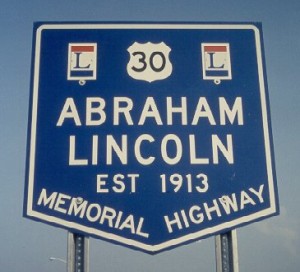



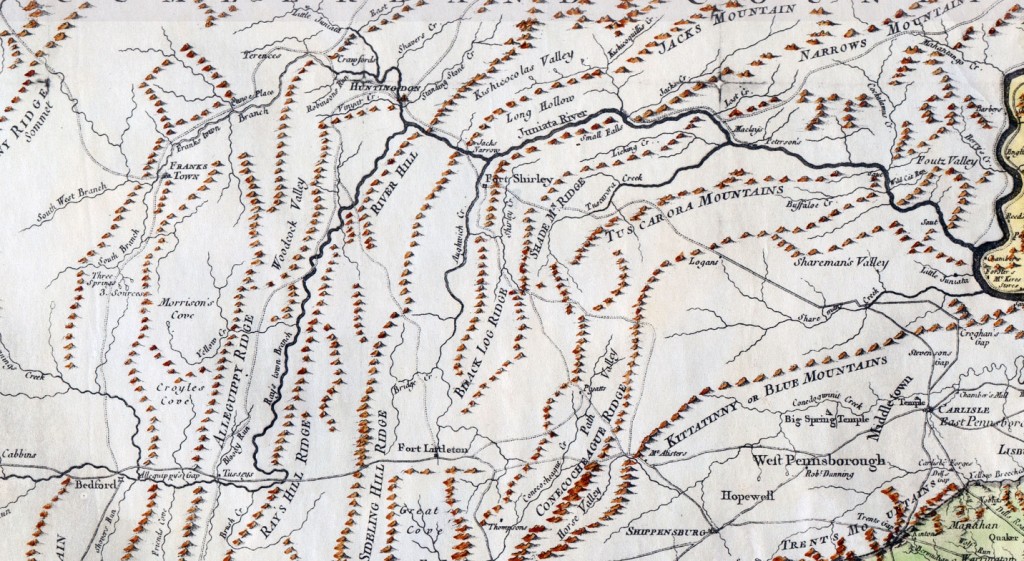















![Pavlov's Drawing of experiment [ref 3]](https://girardmeister.com/wp-content/uploads/2014/11/Ivan-300x171.jpg)





















